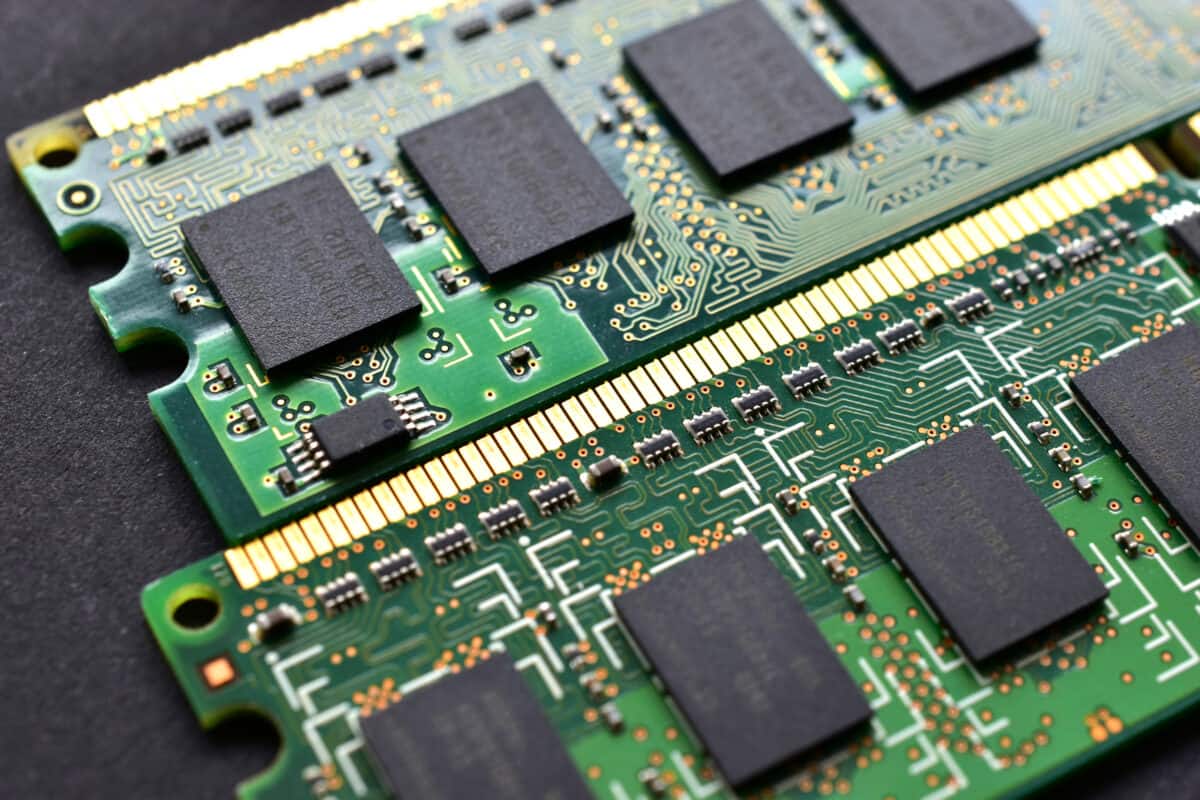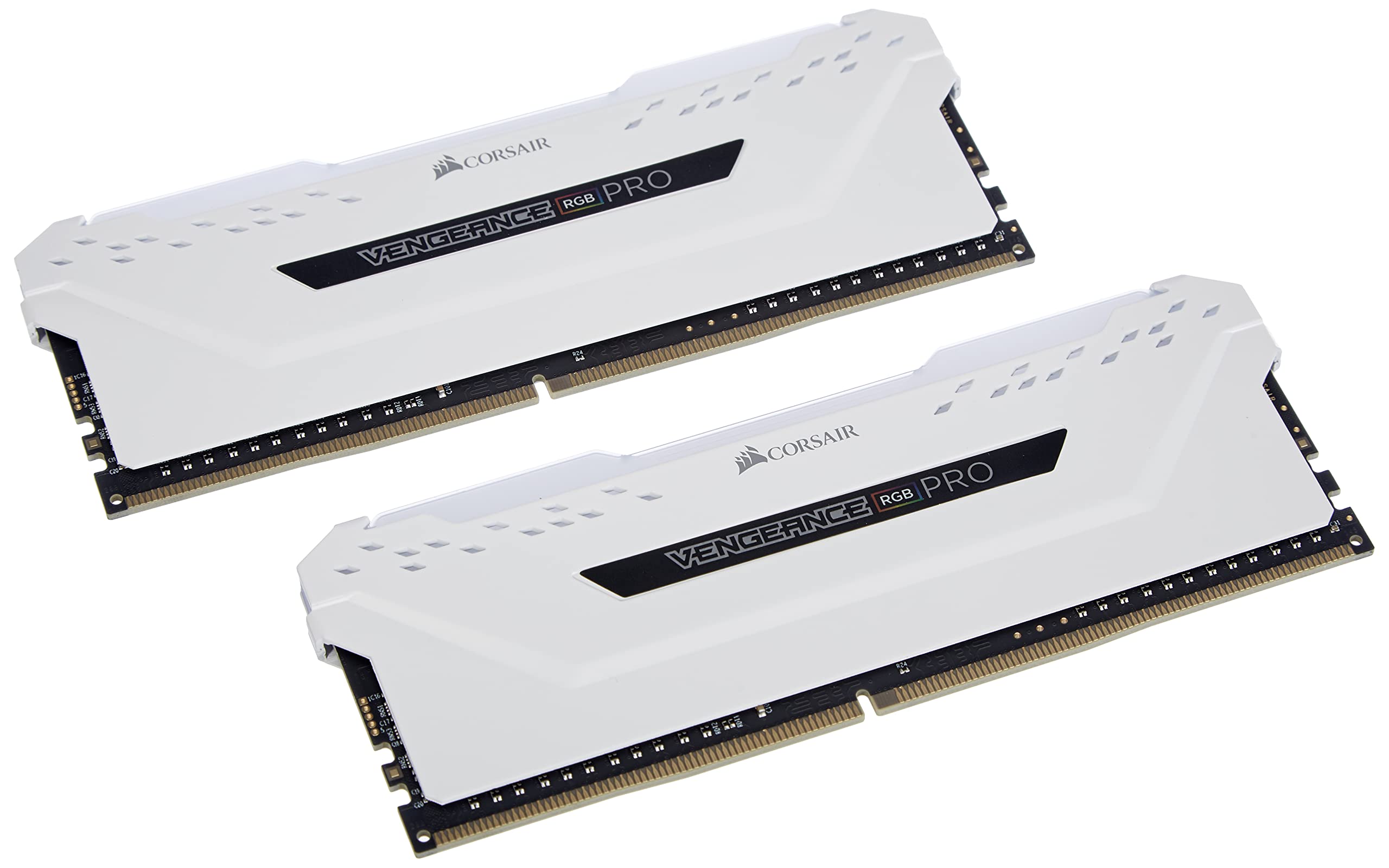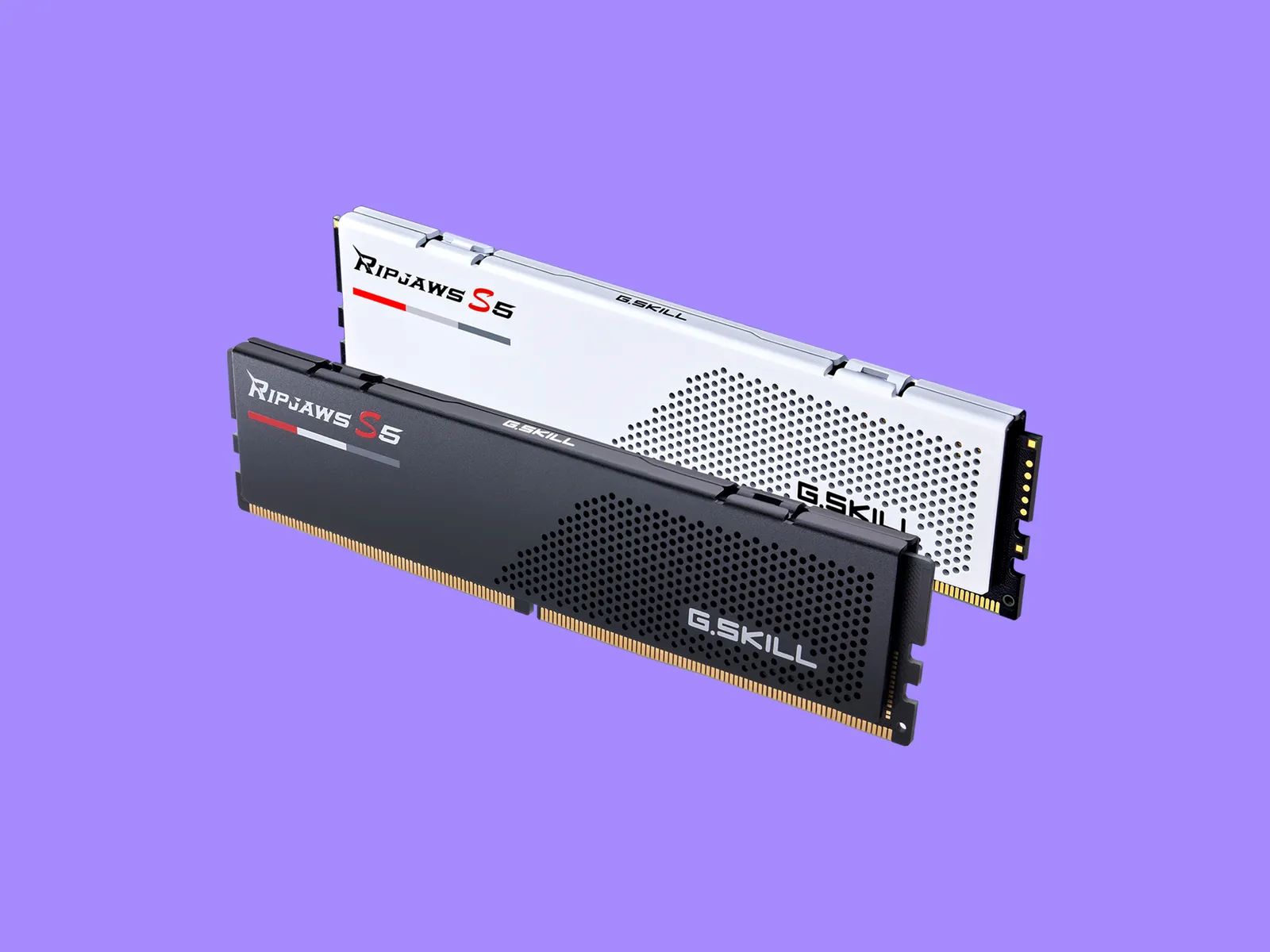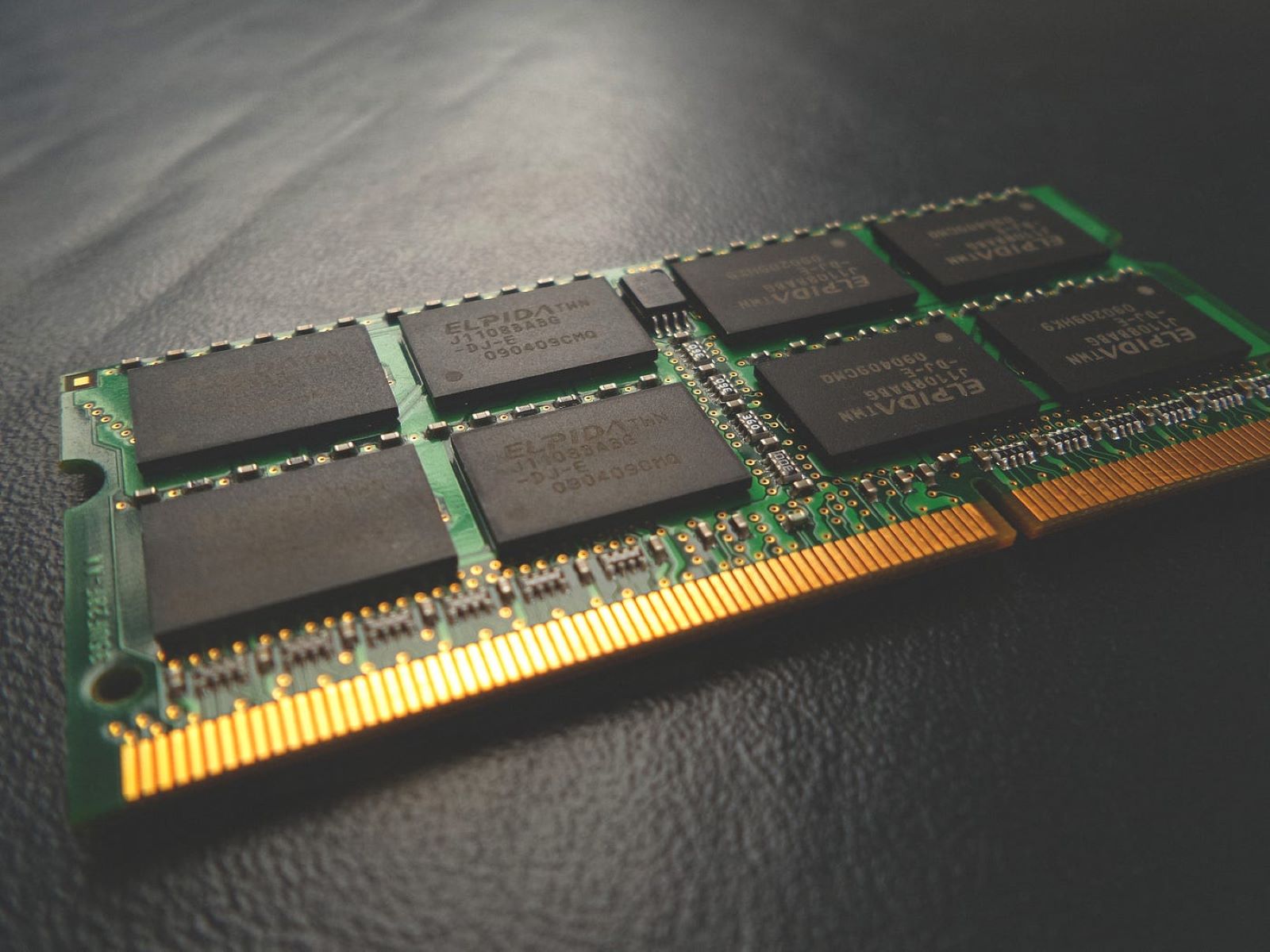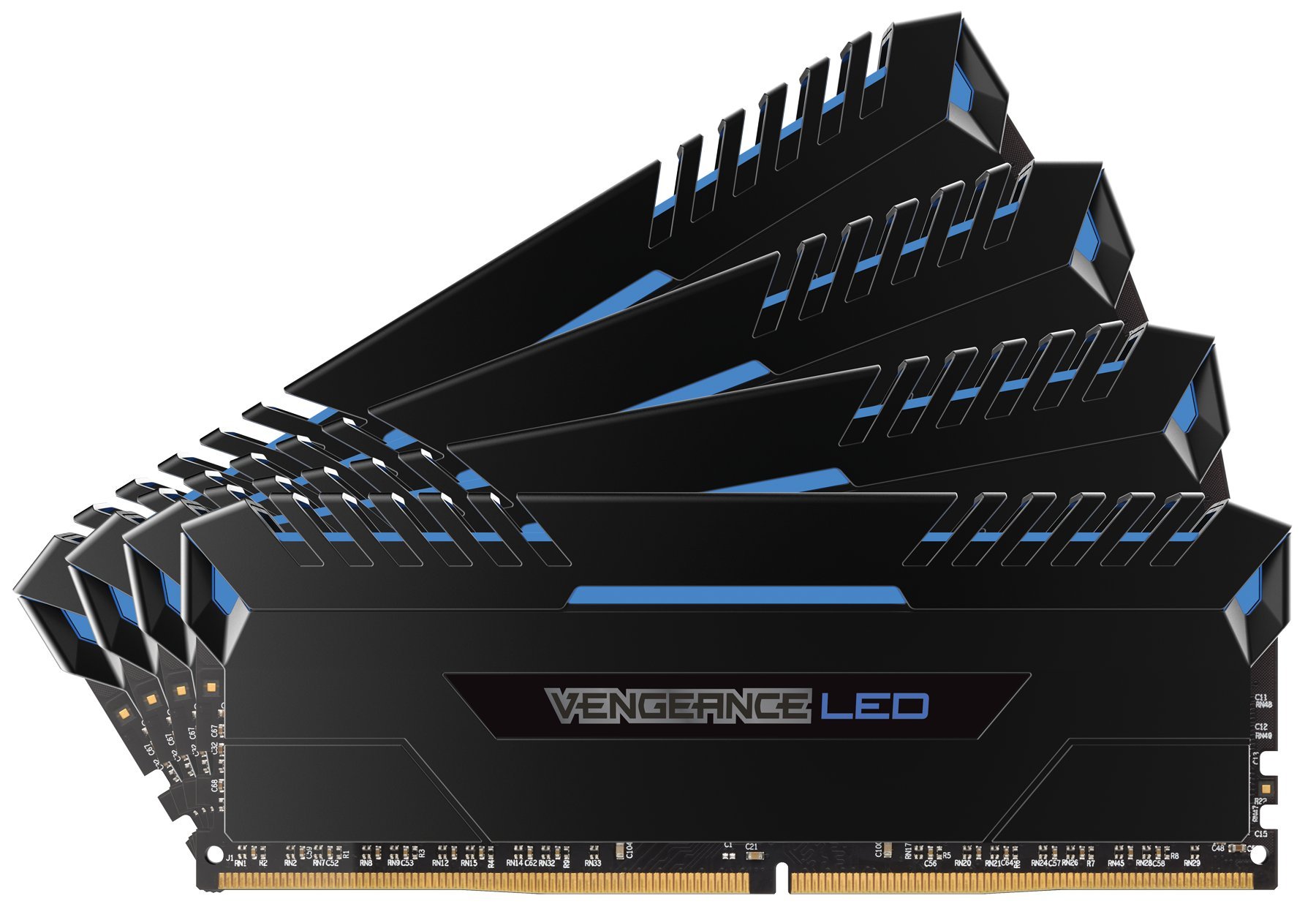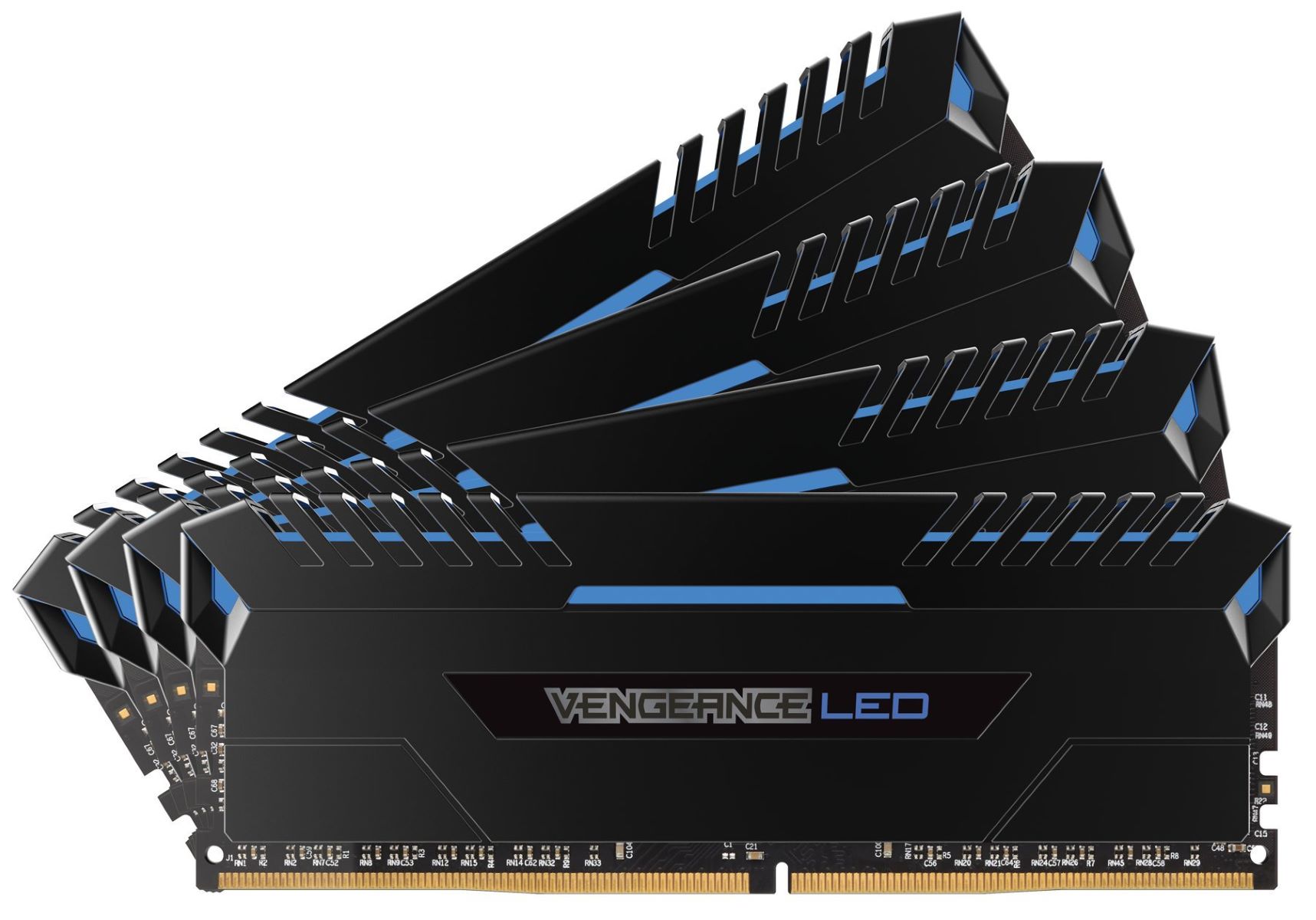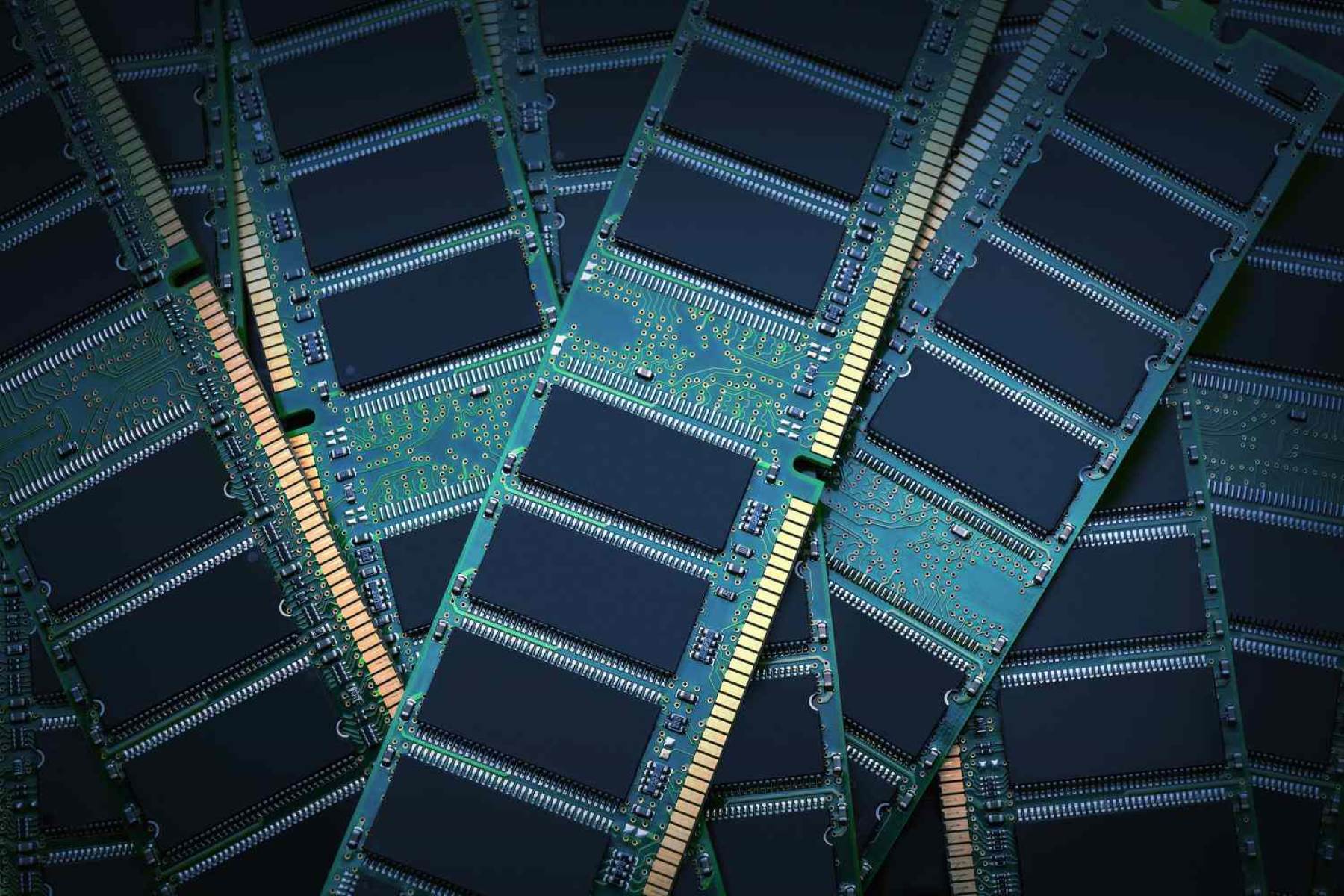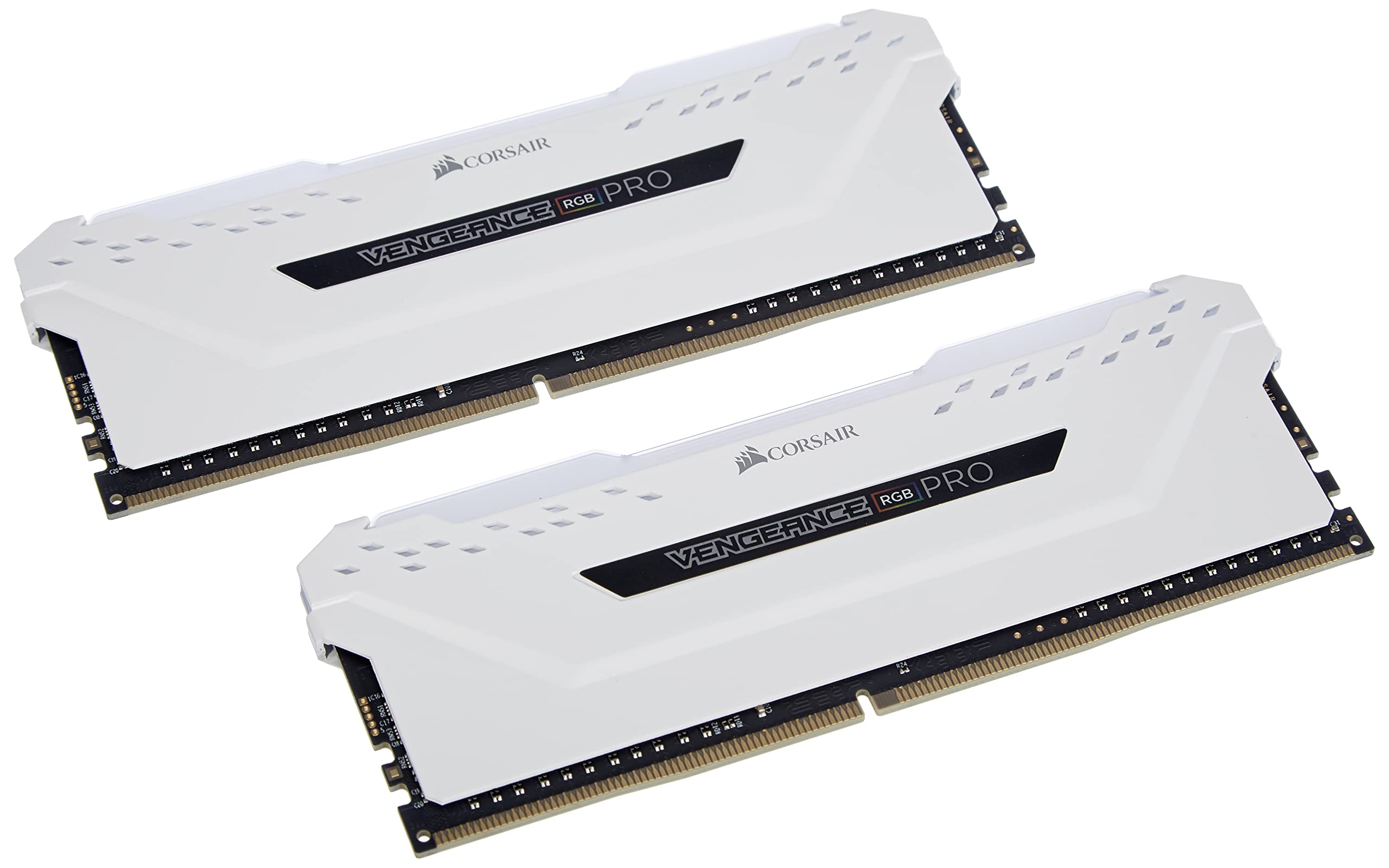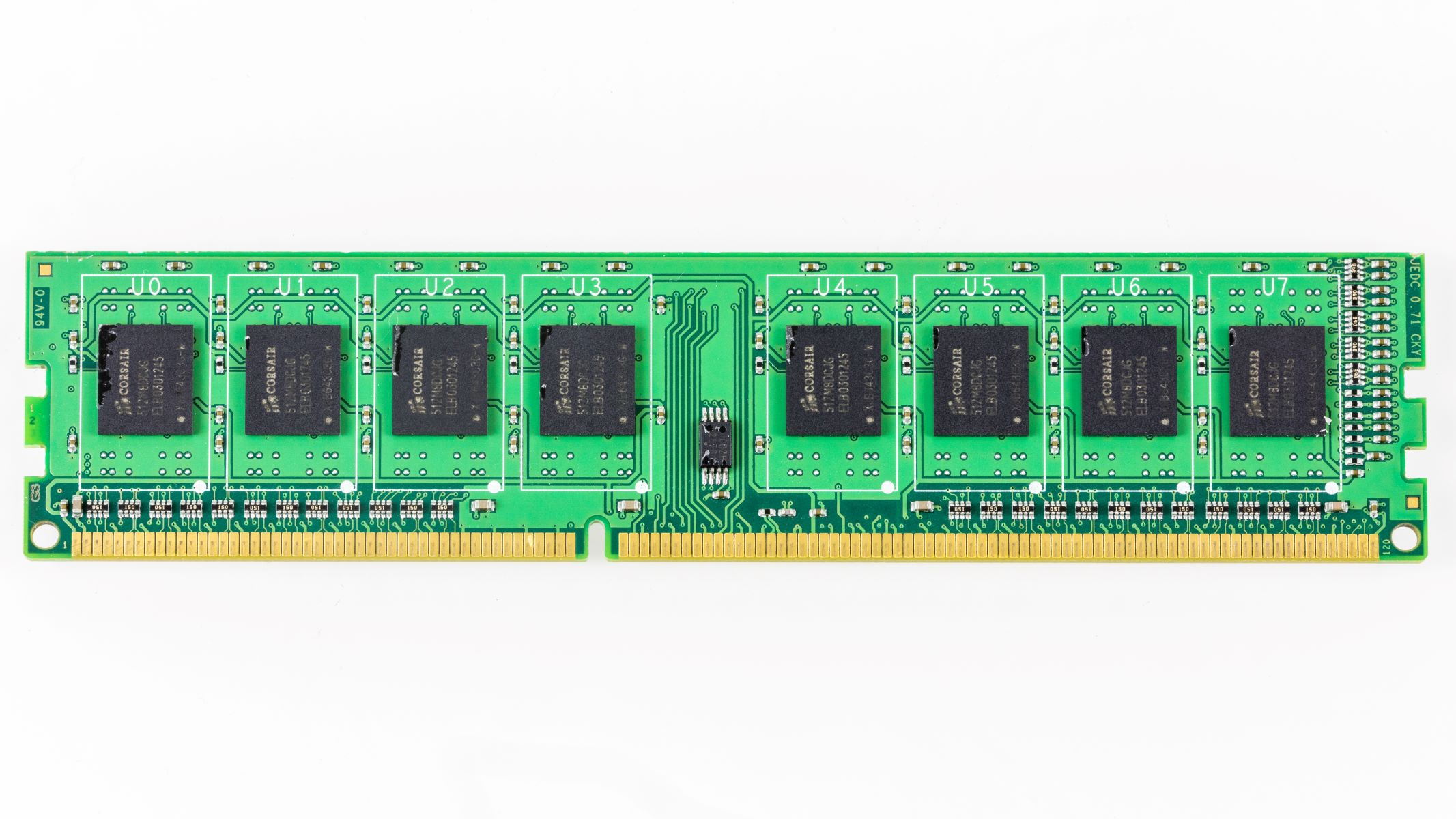Introduction
Welcome to our guide on understanding the difference between 3200MHz and 3600MHz RAM. If you’re a computer enthusiast or someone who’s looking to upgrade their RAM, you’ve probably come across these numbers and wondered what they mean.
RAM, or Random Access Memory, is a crucial component in any computer system. It not only stores data that the CPU needs to access quickly but also plays a vital role in determining the overall performance and speed of your system. When it comes to RAM, you’ll often see a value followed by “MHz” – this value refers to the RAM’s clock speed.
In this article, we’ll delve into the basics of RAM, explain what “MHz” signifies, and discuss the importance of RAM speed. We’ll specifically focus on DDR4 RAM modules, as they are the most commonly available in the market. Furthermore, we’ll explore the advantages and disadvantages of both 3200MHz and 3600MHz RAM to help you decide which option is better suited for your needs.
So, whether you want to boost your gaming performance, increase your productivity, or simply understand more about how RAM affects your computer, this guide will provide you with all the necessary information. Let’s jump right in and unravel the mysteries of RAM clock speeds!
RAM Basics
Before we dive into the specifics of RAM clock speeds, let’s first understand the basics of RAM. RAM, as mentioned earlier, stands for Random Access Memory. It is an essential component of a computer’s memory hierarchy, responsible for temporarily storing data that the CPU can access quickly.
Unlike storage devices like hard drives or solid-state drives (SSDs) that retain data even when the power is turned off, RAM is volatile. This means that the data stored in RAM is lost when the computer is shut down or restarted. However, RAM’s volatility allows for faster read and write speeds, making it ideal for storing temporary data that needs to be accessed quickly.
RAM can be thought of as a workspace for your computer’s processor. The more RAM you have, the more space your processor has to work with, resulting in smoother and more efficient performance. RAM is crucial for multitasking and running memory-intensive applications like video editing software or high-end games.
When it comes to choosing RAM for your system, there are a few key factors to consider. These include the type of RAM (such as DDR4 or DDR3), the capacity (measured in gigabytes or GB), and the clock speed (measured in megahertz or MHz).
Now that we have a solid understanding of the basics of RAM, let’s explore what “MHz” means and how it affects the performance of your system.
What Does “MHz” Mean?
When referring to RAM, “MHz” stands for megahertz, which is a unit of frequency used to measure the clock speed of electronic devices. In the context of RAM, megahertz indicates how many cycles the RAM module can complete in one second.
Essentially, the higher the clock speed (measured in megahertz), the faster the RAM can retrieve and process data. A higher clock speed allows the RAM to communicate with the CPU at a faster rate, resulting in improved overall system performance.
It’s important to note that RAM modules have pre-determined clock speeds, which are set by the manufacturer. These speeds range from lower frequencies like 1333MHz to higher frequencies like 3600MHz, depending on the specific RAM module.
However, it’s essential to understand that the MHz value alone doesn’t tell the whole story. While a higher MHz value generally indicates faster performance, it’s not the sole factor influencing RAM performance. Other factors, such as latency timings and the overall system configuration, also play a significant role.
In the next section, we’ll discuss the importance of RAM speed in more detail and how it affects the performance of your computer.
The Importance of RAM Speed
The speed of RAM is a critical factor in determining the overall performance of your computer. The faster the RAM speed, the quicker your system can retrieve and process data, resulting in improved efficiency and responsiveness.
RAM speed plays a crucial role in tasks that involve frequent data access, such as gaming, video editing, and multitasking. Faster RAM allows for smoother gameplay, faster loading times, and quicker rendering of complex graphics. It also enables seamless multitasking, allowing you to run multiple applications simultaneously without experiencing significant slowdowns.
Additionally, fast RAM speed can have a significant impact on the overall performance of CPU-intensive tasks. When the processor needs to retrieve data from RAM, a higher clock speed allows for quicker access and transfer of data, reducing bottlenecks and improving computational performance.
It’s worth noting that the impact of RAM speed on system performance varies depending on the specific workload and the overall configuration of your system. In some cases, the difference in performance between two RAM modules with slightly different clock speeds may be negligible. However, in tasks that heavily rely on memory access, such as data-intensive applications or virtual machine environments, the effect of faster RAM can be more noticeable.
Furthermore, RAM speed becomes even more crucial when paired with a powerful CPU and graphics card. If you have invested in high-end components, it’s essential to ensure that your RAM speed is not a bottleneck in the overall system performance.
Now that we understand the significance of RAM speed, let’s explore the details of DDR4 RAM and how it impacts clock speeds in the next section.
Understanding DDR4 RAM
DDR4 RAM, short for Double Data Rate 4 Random Access Memory, is the latest generation of RAM technology widely used in modern computer systems. It offers improved performance, higher capacities, and lower power consumption compared to its predecessor, DDR3.
One of the notable improvements in DDR4 RAM is its higher potential clock speeds. DDR4 RAM modules generally have higher MHz ratings compared to DDR3 RAM, allowing for faster data transfer and improved overall system performance.
DDR4 RAM also introduces some architectural changes that enhance its efficiency and performance. For example, DDR4 RAM uses a higher number of banks, which enables better data access and reduces latency. It also supports higher data rates per clock cycle, resulting in increased bandwidth.
Another significant improvement in DDR4 RAM is its increased memory capacity. The maximum capacity of DDR4 RAM modules can range from 4GB to 128GB, depending on the specific module and the capabilities of the motherboard. This higher capacity is especially beneficial for memory-intensive tasks, such as video editing, 3D modeling, and running virtual machines.
Furthermore, DDR4 RAM operates at a lower voltage compared to DDR3 RAM, leading to improved energy efficiency and reduced heat generation. This is particularly advantageous for those who prioritize power savings and thermal performance in their systems.
Overall, DDR4 RAM offers several enhancements over its predecessor, including faster speeds, increased capacity, and lower power consumption. When choosing RAM for your system, make sure that your motherboard supports DDR4 before opting for these modules.
In the next sections, we’ll delve into the specific RAM clock speeds of 3200MHz and 3600MHz, explaining their advantages and disadvantages to help you make an informed decision when upgrading your RAM.
RAM Speeds Explained
When it comes to RAM clock speeds, it’s essential to understand the different options available and how they impact your system’s performance. The clock speed of RAM refers to the number of cycles the RAM module can complete in one second, measured in megahertz (MHz).
Higher RAM speeds, such as 3200MHz and 3600MHz, offer faster data transfer rates and better overall performance. However, it’s important to note that the actual improvement in performance may vary depending on the specific workload and other factors within your system.
When considering RAM clock speeds, it’s crucial to consider both the advantages and disadvantages. Let’s explore the specific details of both 3200MHz and 3600MHz RAM to give you a better understanding.
3200MHz RAM: This clock speed is a popular choice among gamers and general users alike. 3200MHz RAM provides a noticeable boost in performance compared to lower clock speeds like 2666MHz or 2933MHz. It allows for faster data transfer, better multitasking capabilities, and improved performance in gaming and demanding applications. However, the benefits may not be as pronounced in tasks that are not memory-intensive, and the price of 3200MHz RAM may be slightly higher compared to lower clock speeds.
3600MHz RAM: This clock speed offers even higher performance compared to 3200MHz RAM. With 3600MHz RAM, you can expect faster data transfer rates and improved responsiveness in memory-intensive tasks. It is particularly beneficial for gamers who want to squeeze out maximum performance from their systems and content creators who work with large files and complex software. However, it’s worth mentioning that higher clock speeds may come with a higher price tag and may require more careful consideration of other system components for optimal compatibility and stability.
Ultimately, the choice between 3200MHz and 3600MHz RAM depends on your specific needs, budget, and the overall configuration of your system. If you primarily engage in everyday tasks and casual gaming, 3200MHz RAM may offer a good balance between performance and cost. On the other hand, if you are a power user, gamer, or creator, and you want to maximize the potential of your system, investing in 3600MHz RAM may be worth considering.
In the next section, we’ll weigh the advantages and disadvantages of both 3200MHz and 3600MHz RAM to help you make an informed decision.
3200MHz RAM: Advantages and Disadvantages
Advantages:
- Faster Performance: One of the main advantages of 3200MHz RAM is its improved performance compared to lower clock speeds. The faster data transfer rate allows for quicker access to data, resulting in smoother overall system performance.
- Good Value for Money: 3200MHz RAM strikes a good balance between performance and cost. It provides a noticeable improvement in performance compared to lower clock speeds while remaining relatively affordable.
- Compatibility: 3200MHz RAM is widely supported by most modern motherboards, ensuring easy compatibility and a hassle-free installation process. It offers a good level of flexibility for upgrading or building a new system.
- Decent Gaming Performance: For gamers, 3200MHz RAM can offer a significant boost in gaming performance. It allows for faster loading times, smoother framerates, and improved overall gameplay experience.
Disadvantages:
- Potential Diminishing Returns: It’s important to note that the performance gains from 3200MHz RAM compared to lower clock speeds may not be as significant in tasks that are not memory-intensive. For tasks like web browsing or basic office work, the difference in performance may not be noticeable.
- Higher Cost: While 3200MHz RAM is generally more affordable than higher clock speeds, it may still have a higher price tag compared to lower clock speed options like 2666MHz or 2933MHz. If you’re on a tight budget, this could be a factor to consider.
- Potential Compatibility Issues: Although 3200MHz RAM is widely supported, there is still a chance of compatibility issues, particularly with older motherboards or specific system configurations. It’s important to ensure that your motherboard can handle the 3200MHz clock speed before making a purchase.
Considering these advantages and disadvantages, it’s important to evaluate your specific needs and budget before deciding to invest in 3200MHz RAM. If you require a noticeable boost in performance, particularly for gaming or memory-intensive tasks, and you have the budget to accommodate the higher clock speed, 3200MHz RAM could be a viable option for your system.
Next, we will explore the advantages and disadvantages of 3600MHz RAM to further assist you in making an informed decision.
3600MHz RAM: Advantages and Disadvantages
Advantages:
- Enhanced Performance: 3600MHz RAM offers even faster data transfer rates compared to 3200MHz RAM. This increased speed can result in improved overall system performance, especially in memory-intensive tasks like video editing, rendering, and running virtual machines.
- Optimal for Gaming: Gamers seeking the highest performance possible will benefit from 3600MHz RAM. It allows for faster loading times, smoother frame rates, and better responsiveness, resulting in an enhanced gaming experience.
- Powerful for Content Creation: If you are involved in content creation, such as video editing or 3D rendering, 3600MHz RAM can significantly decrease rendering times and improve workflow efficiency. Working with large files and complex software becomes more seamless with faster RAM speeds.
- Potential for Overclocking: 3600MHz RAM usually has good overclocking potential. Overclocking allows you to push the RAM beyond its rated speed, unlocking even greater performance gains if you have a compatible motherboard and sufficient cooling.
Disadvantages:
- Higher Cost: One of the main disadvantages of 3600MHz RAM is its higher price point compared to lower clock speeds. You can expect to pay a premium for the increased performance it offers. This price difference may be a limiting factor for those on a tighter budget.
- Compatibility Concerns: Not all motherboards and systems are designed to support 3600MHz RAM out of the box. It’s essential to ensure that your motherboard’s specifications explicitly state support for 3600MHz clock speed, or else you may encounter compatibility issues.
- Marginal Performance Gains in Some Scenarios: While the higher clock speed of 3600MHz RAM undoubtedly offers improved performance, the actual gains may not always be significant in tasks that are not memory-intensive. For everyday tasks like web browsing or basic office work, the difference in performance may not be noticeable.
Considering these advantages and disadvantages, it’s crucial to assess your specific needs and budget when considering 3600MHz RAM. If you are a power user, gamer, or content creator who demands optimal performance and you have the budget to accommodate the higher cost, 3600MHz RAM could be an excellent choice for your system.
Now that we have explored the advantages and disadvantages of both 3200MHz and 3600MHz RAM, let’s summarize and help you determine which option is best suited for you in the next section.
Which Should You Choose?
Now that we have examined the advantages and disadvantages of both 3200MHz and 3600MHz RAM, you may be wondering which option is the right choice for you. The decision ultimately depends on your specific needs, budget, and the overall configuration of your system.
If you are a casual user who primarily engages in everyday tasks like web browsing, word processing, or casual gaming, 3200MHz RAM may provide ample performance for your needs. It offers a noticeable improvement compared to lower clock speeds without breaking the bank. Additionally, 3200MHz RAM has good compatibility and is widely supported by modern motherboards.
On the other hand, if you are a power user, gamer, or content creator who relies on memory-intensive tasks, investing in 3600MHz RAM can unlock even greater performance gains. It offers enhanced responsiveness, quicker data transfer rates, and can significantly improve gaming experiences or complex content creation workflows. However, it’s important to consider that 3600MHz RAM comes with a higher price tag and potential compatibility concerns.
When making your decision, it’s also crucial to consider other components in your system. Ensure that your CPU, graphics card, and motherboard can fully support the chosen RAM speed. Keep in mind that the performance benefits of higher clock speeds may vary depending on the specific workload and other factors within your system.
Ultimately, the choice between 3200MHz and 3600MHz RAM depends on your specific requirements, budget constraints, and what kind of performance you seek from your system. Analyze your usage patterns, assess your budget, and consider the specific tasks you frequently perform on your computer. This evaluation will guide you toward making the right decision for your needs.
We hope that this guide has provided valuable insights into the differences between 3200MHz and 3600MHz RAM. Remember to weigh the advantages and disadvantages, consider your specific requirements, and make an informed decision that best suits your computing needs.
Conclusion
Understanding the difference between 3200MHz and 3600MHz RAM is crucial when it comes to optimizing the performance of your computer system. RAM clock speed plays a vital role in determining how quickly data can be accessed and processed, ultimately impacting overall system responsiveness and performance.
In this guide, we explored the basics of RAM, discussed the significance of RAM speed, and provided an in-depth analysis of both 3200MHz and 3600MHz RAM. We examined their advantages and disadvantages to help you make an informed decision when choosing the right RAM for your needs.
For casual users who engage in everyday tasks, 3200MHz RAM offers an excellent balance between performance and cost. It provides a noticeable improvement over lower clock speeds without breaking the bank. On the other hand, power users, gamers, and content creators who demand maximum performance in memory-intensive tasks may benefit from investing in 3600MHz RAM. It boasts faster data transfer rates and can significantly enhance gaming experiences and content creation workflows.
Ultimately, the choice between 3200MHz and 3600MHz RAM comes down to your specific needs, budget, and the overall configuration of your system. Carefully evaluate your requirements, consider other components in your system, and weigh the advantages and disadvantages before making a decision.
We hope that this guide has helped you gain a better understanding of RAM clock speeds and empowered you to make an informed decision. Remember, the right RAM choice can have a significant impact on your overall computing experience, so choose wisely to optimize your system’s performance.







